How to Distinguish Swimming Styles
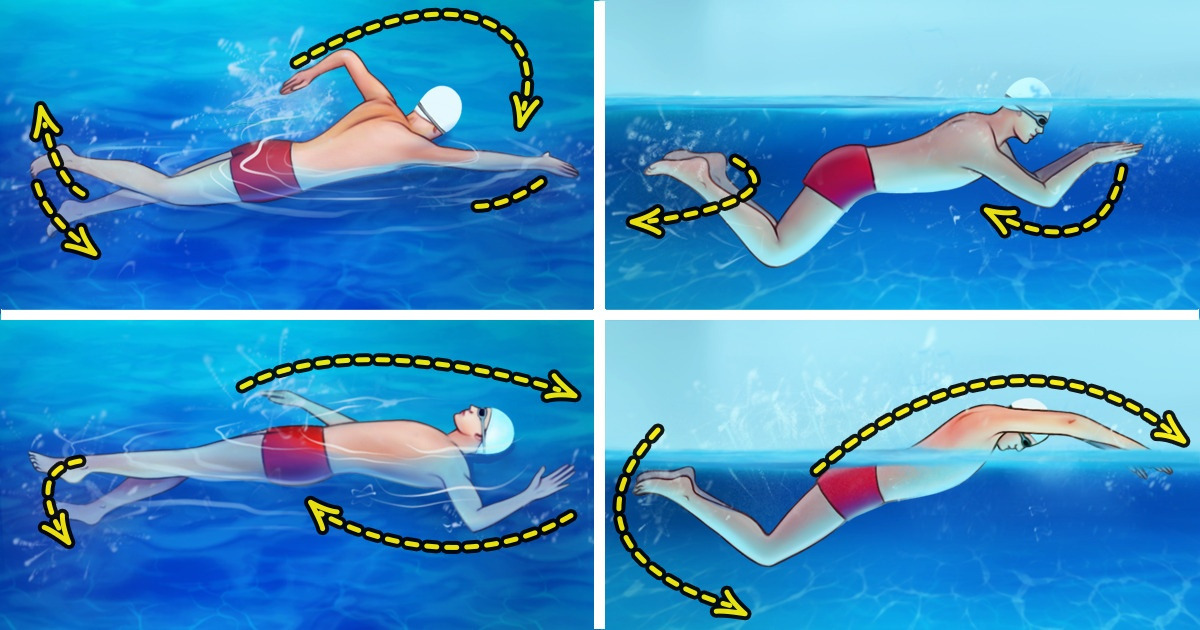
Swimming is a popular physical activity that trains the muscles of your entire body. You can use different techniques to swim. 5-Minute Crafts has created a short guide on 4 of the most important swimming styles.
Front crawl
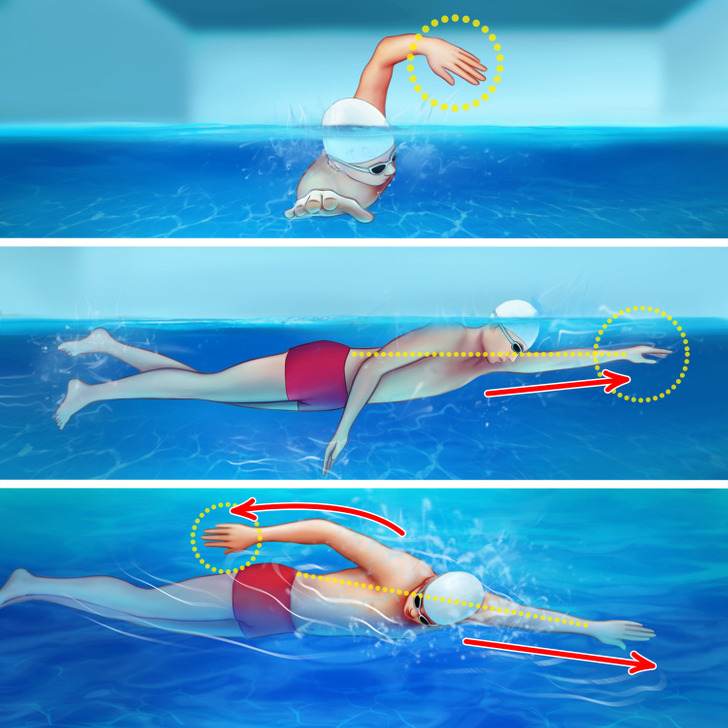
This swimming stroke is also widely known as freestyle since it is usually chosen for the freestyle event by professional swimmers due to its speed. Besides being the fastest stroke, it is aggressive and should be executed as precisely as possible.
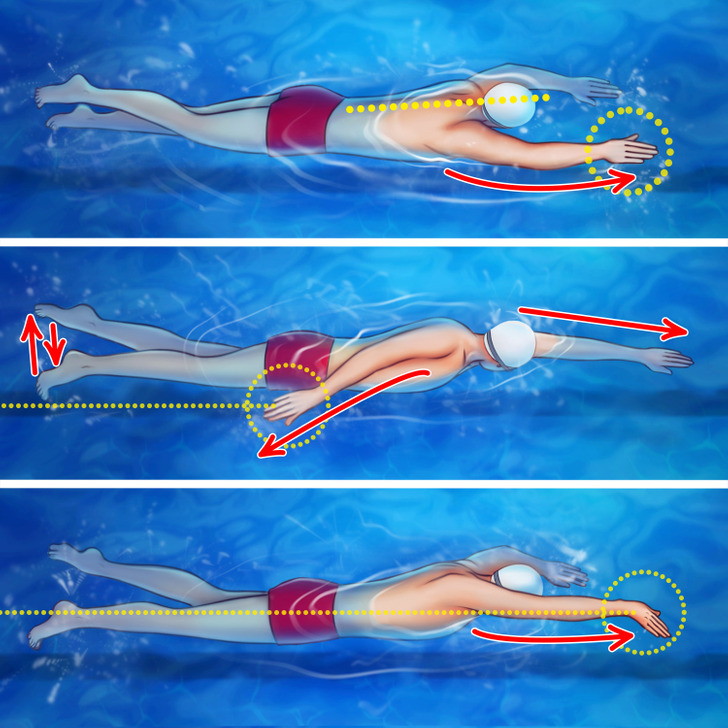
The front crawl consists of lying on your stomach and holding your body parallel to the surface of the water. Your arms make windmill-like movements while the body is propelled with flutter kicks: the feet are pointed and the legs should not be bent at the knees. The swimmer should be turning their head to the side while their arm is above water and use this interval for breathing.
The main downside of front crawl swimming is that it leads to quicker fatigue.
Backstroke
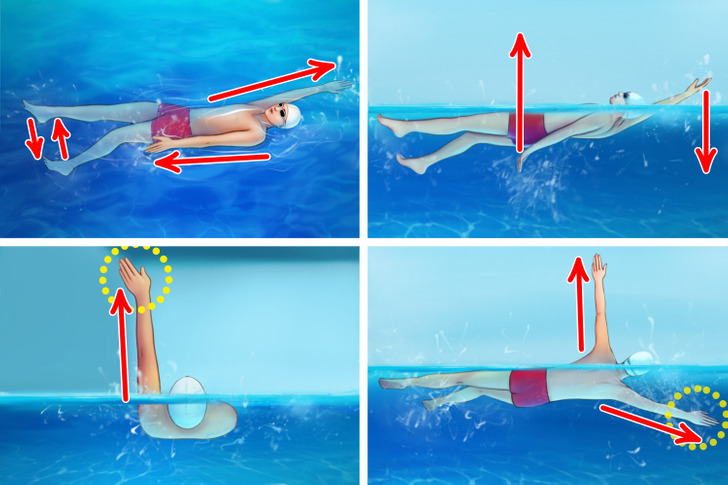
Backstroke is just like front crawl, but performed on the back. It is highly advised for people suffering from back pain.
This swim style requires propelling yourself backward while floating on your back and making circular arm movements. The entire body should be in a straight position and the legs kept close together underwater.
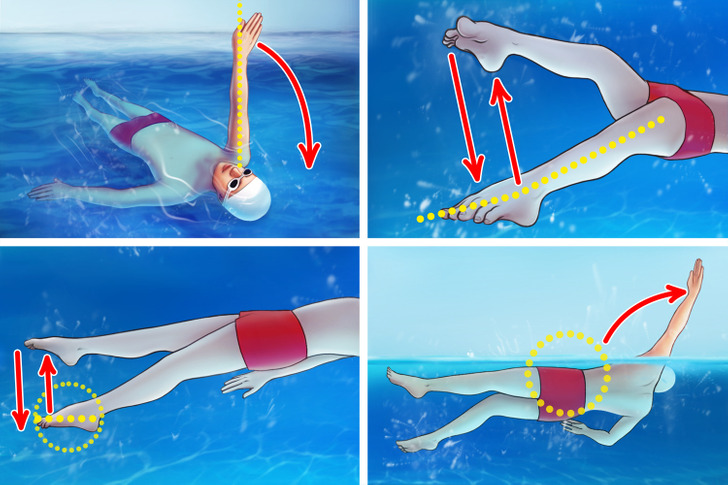
The face remains above water with the swimmer looking straight up. Again, the breathing should match the swimmer’s strokes despite the constant air access.
However, the downside is that it sunlight blinds our vision when we practice backstroke swimming outdoors in sunny weather.
Breaststroke
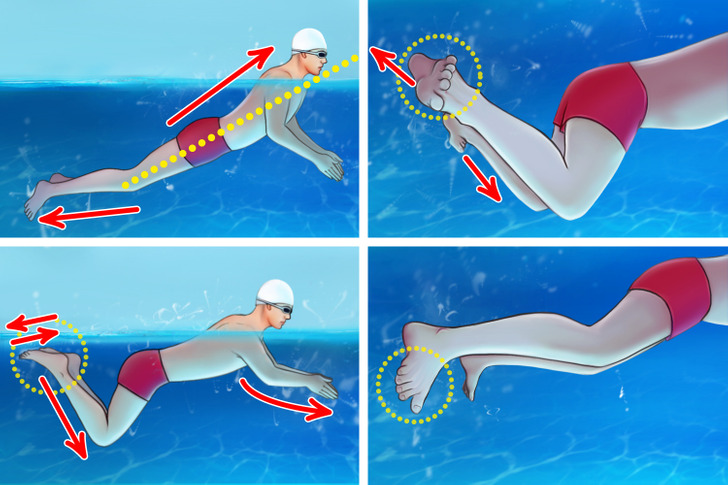
This is the slowest, but the most popular swimming technique, especially among beginners. It is considered the easiest to learn and its simple form does not require submerging the head.
The professional swimmer, however, does need to put their head underwater. Breaststroke is performed by the simultaneous circular movement of the arms slightly below water. The key movement are the whip kicks that are reminiscent of a frog swimming: the swimmer needs to bring their legs toward their torso by bending at the knees and hips. The legs then move outward, extend, and come back together.
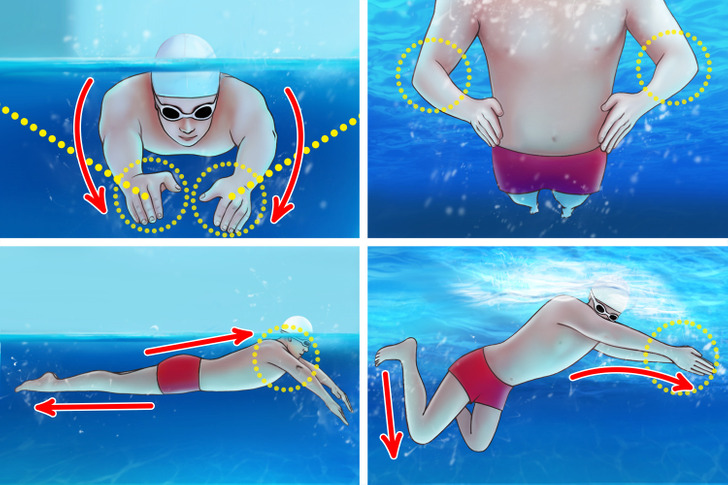
In order to propel effectively, it is important to match the arm and leg movements: the arms should rest during the kick and the legs should straighten while the arms push the body forward. The whole upper body should rise above the surface of the water during propulsion. Experts claim that the timing is hard to master, though.
It is considered, however, that the downside of the breaststroke technique is that it may cause problems with your knees.
Butterfly
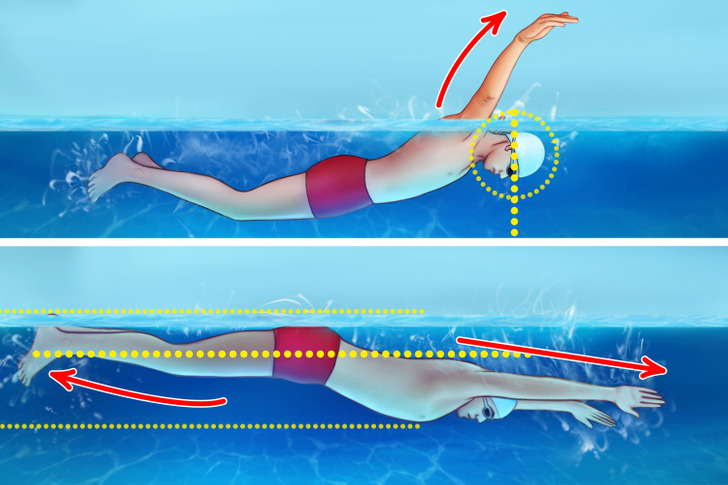
This is a tiring, hard-to-learn stroke that represents the toughest cardio workout among all the swimming styles.
The butterfly stroke is performed by starting horizontally. The body should be kept as flat as possible with a face-down position while maintaining eye direction 90 degrees below you to the bottom of the pool. The swimmer goes forward by bringing their arms over their head simultaneously and then pushing them into the water. This way they are propelled forward and their head and shoulders should be pushed above the water. Then the arms are brought up out of the water.
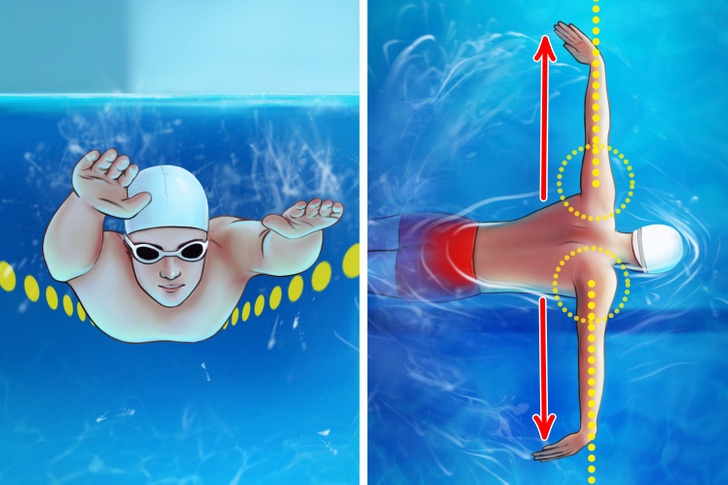
The dolphin kick is executed by imitating the dolphin’s lower body movement, which requires keeping the legs together and straight. The body movement resembles a wave motion.
As the most physically challenging of all swimming styles, the butterfly stroke brings extreme fatigue to shoulder muscles.